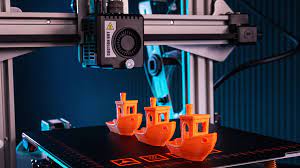Getting Started with 3D Printers
You have unboxed your latest 3D printer, placed it together, and installed any software application on the computer. You probably have also printed an example design from the manufacturer to ensure every little thing works.
But, even if you have among the best 3D printers, you would need more than a positive outlook to take advantage of it.

3D Printers: Beginner Tips
Level the Print Bed
When we talk about “leveling the bed,” it is tramming the print surface area. 3D printers have been attached to the walls or turned upside down and still function fine. Leveling to a table has nothing to do with their ability to print.
When 3D printers level the bed, you see that the nozzle is at the same elevation across the print surface. This permits the printer to set an excellent initial layer and structure for a perfect print.
Clean the Print Bed
Your print surface could be perfectly level and degree, yet plastic will only stick to it if it’s clean. It’s a gross fact of life, yet traces of skin oil from your own hands can hinder the initial layer bond. Above all, many PLAs are made with gooey flavors for extra shine and glimmer. These secret active ingredients can leave a glossy deposit on your print bed.
91% isopropyl alcohol is the ideal cleaning agent. Wipe your print surface area with alcohol and a paper towel after every print to maintain it spotless.
Use Rafts to Raise your Success Price
Rafts are precisely what they seem like- a chunky first layer that your version rests on. The adhesion helpers oppose unequal and dirty beds and virtually ensure an effective print. Some people had instead stuck a fork in their eye and then confessed to using a raft.
Keep the Nozzle Clean and Purchase Spares
Your new printer might have come with two nozzles, one installed on the hot end and an extra. Most FDM 3D printers depend on brass nozzles that break from use, specifically if you run filaments with unpleasant shine or fibers.
For as low as 25 cents apiece, brass nozzles are the most inexpensive part of the printer. As well as one of the most important. If your printer uses them, the first thing you intend to purchase is much more nozzles.
Keep the Filament Fresh and Tight
PLA is one of the most preferred filaments for 3D printing since it’s the simplest to work with and comes in a substantial range of colors. It does not conveniently take in moisture. Thus, you can keep it secured in impermeable containers.
That doesn’t mean you could toss it on the floor. The most significant trouble for filament is dirt and also tangles. This is why appropriate spool handling is essential to successful printing.
Using a cleaning sponge, you can protect against dust from obstructing your printer. Just attach a small sponge item using a binder clip to the filament before it gets in the extruder. Add olive oil to the sponge to lubricate the hot end and prevent stringing.
Getting Started with 3D Printers Read More »


